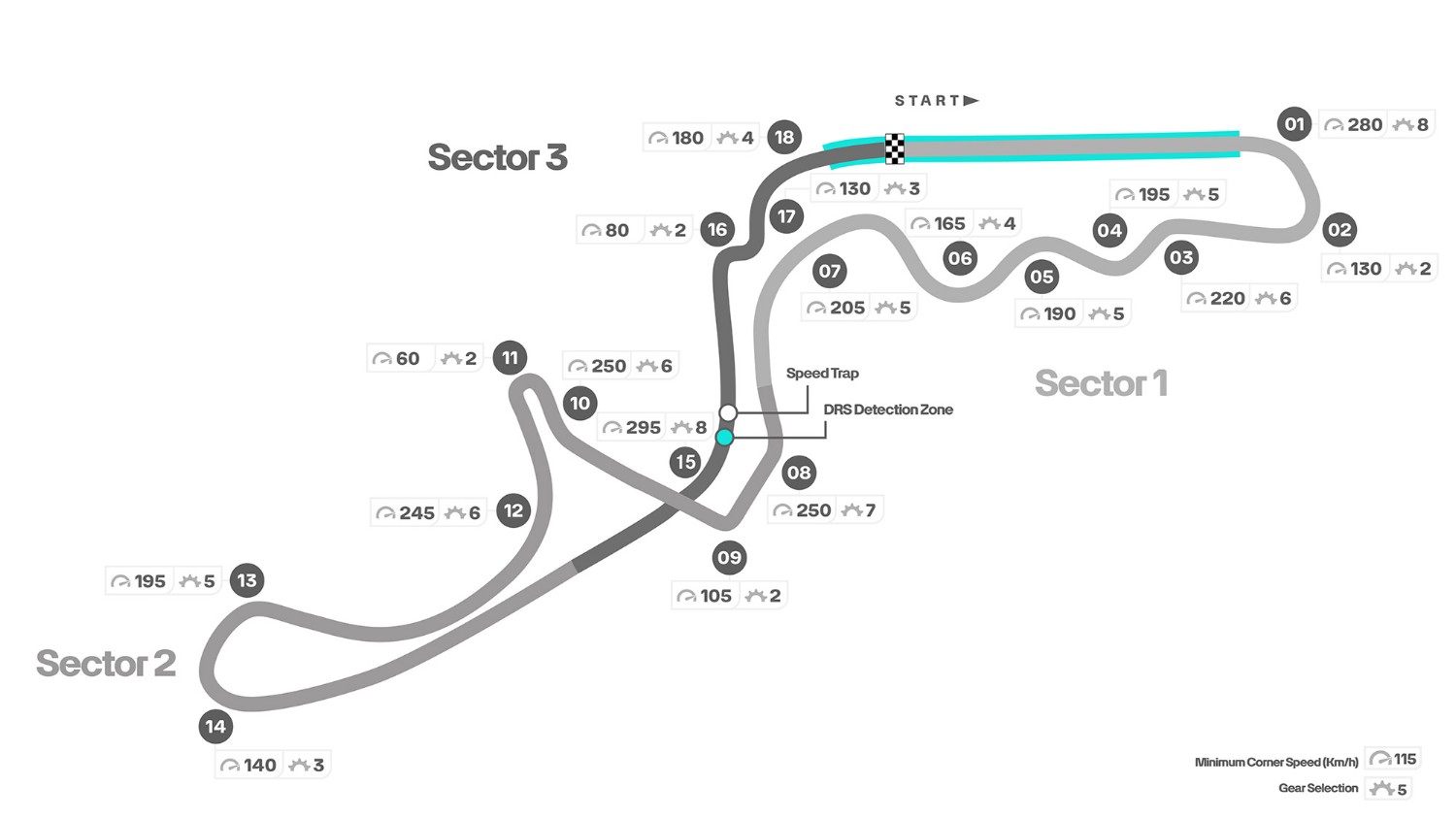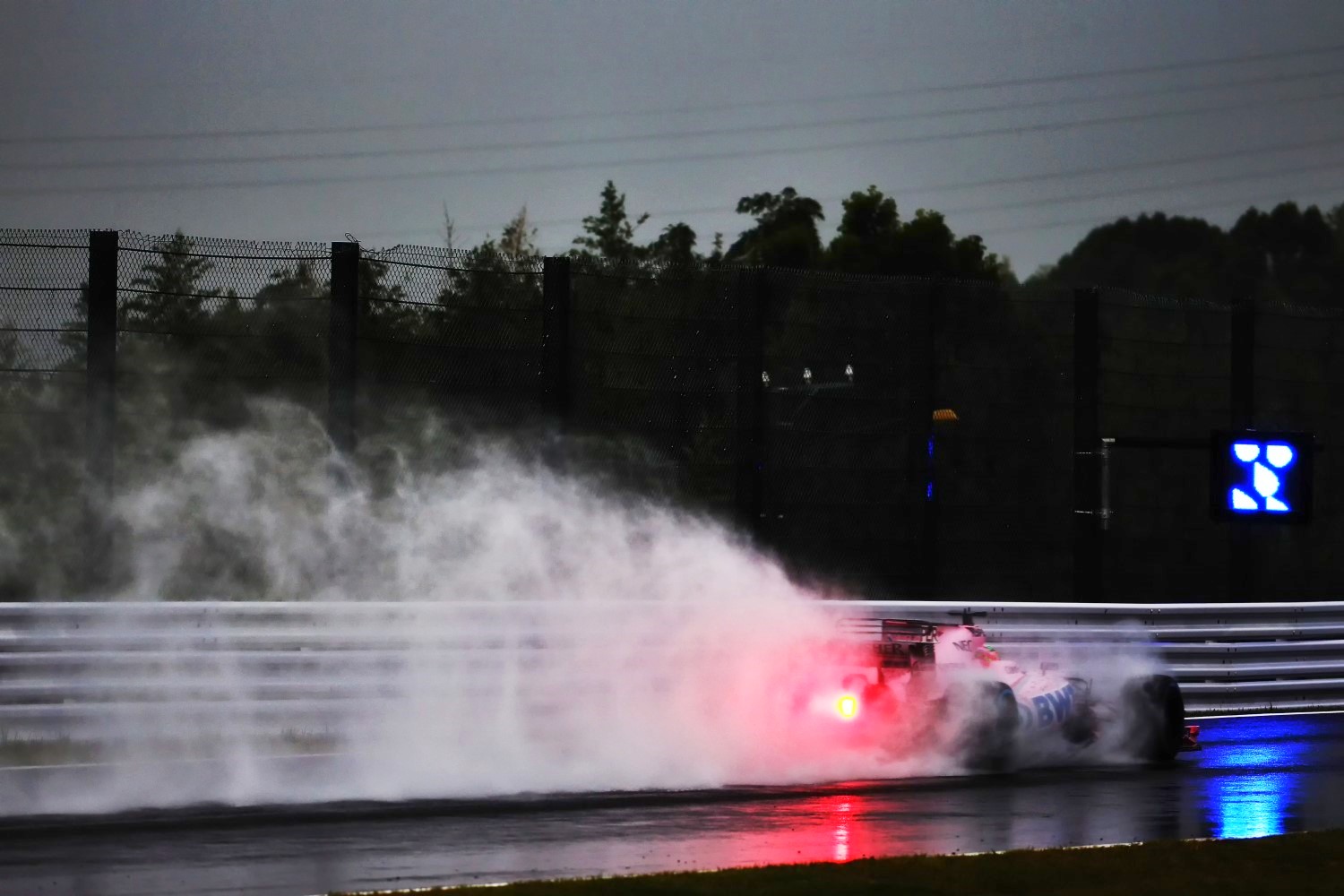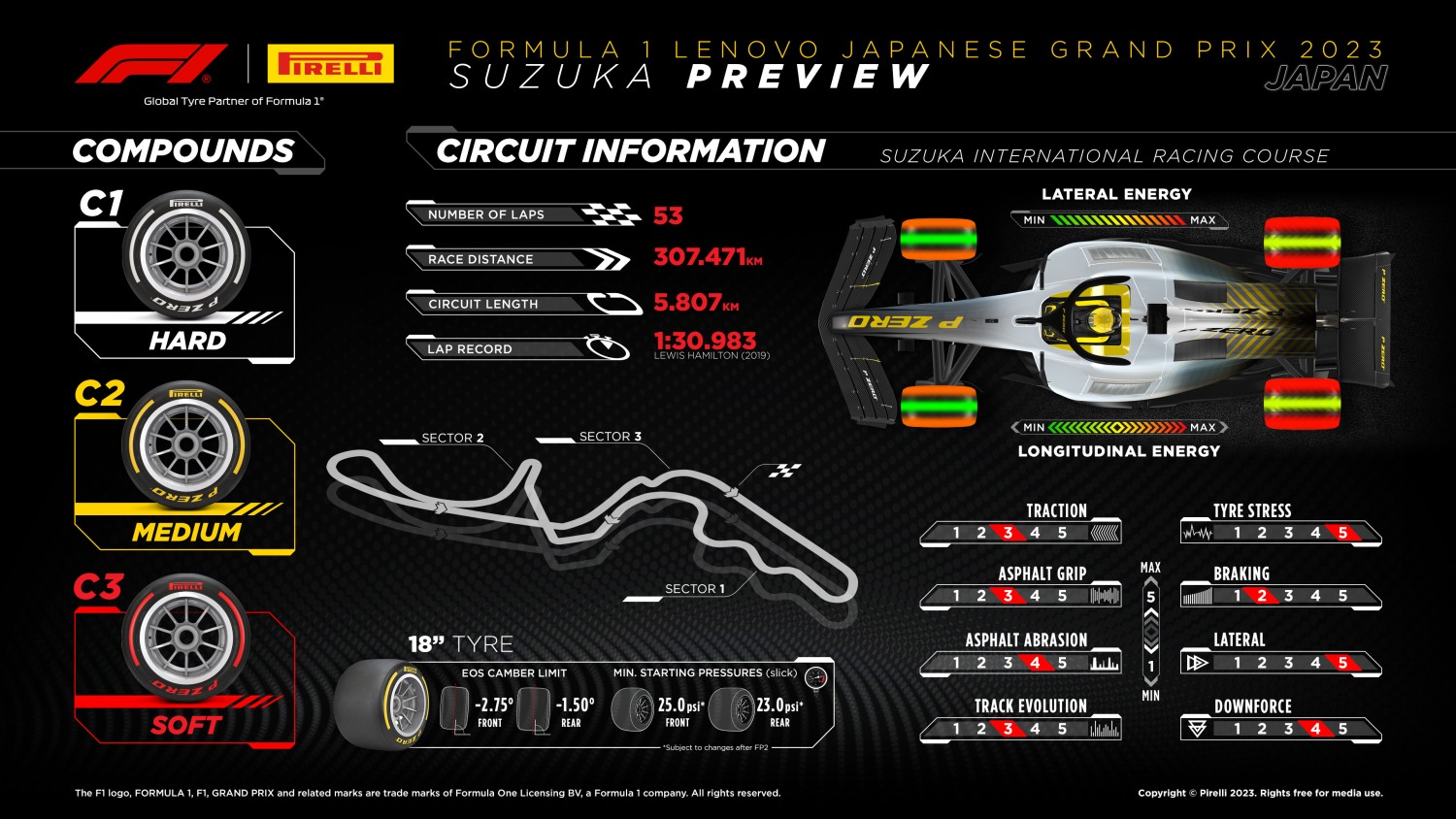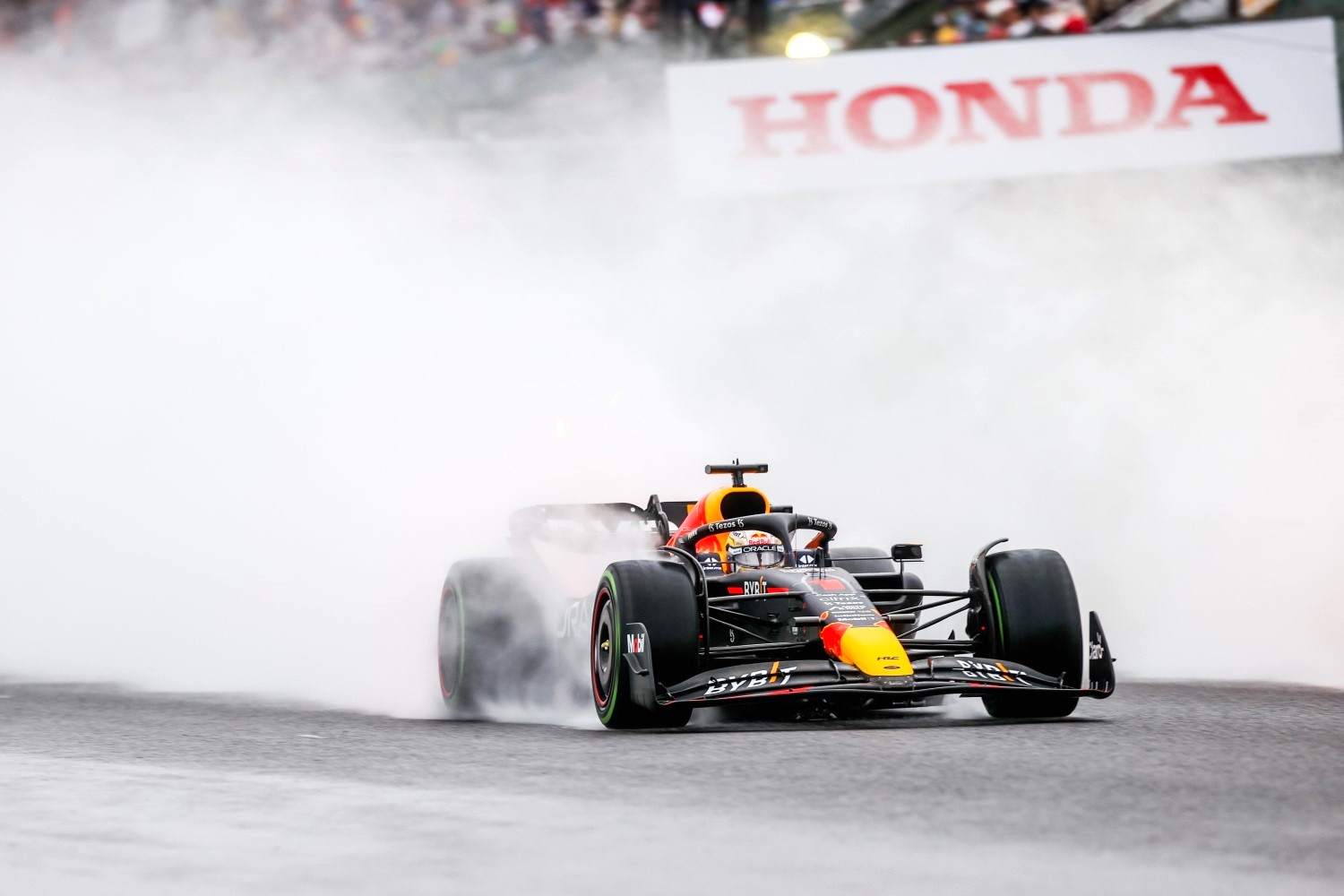F1: 2023 Japanese GP Preview
We preview this weekend’s Japanese GP Formula 1 race at the historic 3.61-mile long Suzuka circuit, owned by Honda.
Japan initially joined Formula 1’s schedule at Fuji Speedway in 1976, a race made famous for the title showdown between James Hunt and Niki Lauda, but after its second year the country was absent for a decade. When Formula 1 eventually returned to Japan, in 1987, it did so at the demanding figure-of-eight Suzuka Circuit.
Its placement in the calendar means Suzuka has been the scene for the crowing of several world champions, some after high-profile collisions, while Max Verstappen became the latest world champion to secure a title at Suzuka, in 2022. It will be the last Suzuka race to take place in the fall for some time with the event due to shift to spring from 2024.
Speak to any Formula 1 driver, and they will immediately place Suzuka among their favorite racetracks. The drivers cascade into the high-speed right-hander at turn 1 before plunging immediately into a sequence of Esses, undulating through the scenery with rapid changes of direction. Fast corners such as Degner 1 and Degner 2, Spoon Curve and 130R require inch-perfect precision, while more technical turns including the hairpin and chicane are also deceptively tricky. The close proximity of grass, gravel and unforgiving barriers means even minor errors can be heavily punished.
Torrential rain and typhoons can even interrupt proceedings at Suzuka. On three occasions (2004, 2010, 2019) qualifying was moved to Sunday morning following the threat of a typhoon, while in 2022 the race was shortened with only 28 of 53 scheduled laps completed due to persistent heavy rainfall.

With an average speed of 153mph (240km/h), Suzuka is one of the quickest tracks on the F1 calendar.

Suzuka is revered throughout the world as one of motorsport’s finest permanent circuits, with drivers barely having time to breathe through the lap, as they walk a tightrope while pushing their machines to the limit. The first sector is dominated by the Esses, a sequence of narrow sweeping medium- and high-speed corners that rise and plummet, while corners such as Spoon and 130R require total commitment.

The peril is enhanced by the proximity of the grass, gravel traps and barriers, meaning mistakes are regularly punished. Suzuka is also the only circuit on the calendar to feature a flyover, with drivers passing underneath the entry to 130R as they negotiate the exit of Degner 2.
Overtaking is not easy in Suzuka but it is possible and the racing is always good here. The drivers will need to quickly find a rhythm, especially through the Esses, but once they have that, the lap time can improve very quickly.
Dave Robson, Williams Head of Performance View
Suzuka is one of the best circuits that we visit and the high-speed layout should suit the FW45 well. The track is very technical and asks a lot of the drivers and the tires. Exactly how the tires behave will depend on the track temperature, which could be hot at times this weekend. We have the hardest compounds here this weekend, and we also have some prototype Medium compound tires to test on Friday.
There could be some rain around on Friday, which may disrupt our test program, but the rest of the weekend looks dry and hot. If the weather allows then we have a few items to look at on Friday, but the majority of the program will be dedicated to getting the drivers and the cars ready for this demanding racetrack. This is Logan’s first time racing in Suzuka and it will take him a few laps to find his feet and to understand the set-up compromises that are necessary to achieve a good overall lap time here.
Ferrari to bring more upgrades
After winning in Singapore, Ferrari is gearing up with significant upgrades to their SF-23 for the Japanese Grand Prix.
Amidst a season firmly under the reign of Max Verstappen and Red Bull, the Singapore Grand Prix unveiled a twist. The Marina Bay circuit’s luminous night posed significant challenges for Red Bull, rendering the RB19 less competitive, with setup issues that couldn’t be rectified in time.
However, Verstappen’s squad wasn’t the sole talking point in Singapore. Ferrari, with strategic ingenuity, capitalized on Red Bull’s vulnerability. The Marina Bay circuit presented a golden opportunity, allowing Carlos Sainz to clinch victory and break Ferrari’s winless spell. Integral to this were the choices made for Charles Leclerc, opting for soft tires, ensuring a Ferrari 1-2 start.
Ferrari’s emphasis is on understanding and refining the SF-23’s concept, with significant development aligned to the 2024 season. The upcoming parts, approved pre-break, focus on high-speed efficiency—a vital factor for Suzuka.
Unlocking the Lap
Revered by all drivers and one of the most spectacular places to watch a Formula One car on the limit, the opening snake through the Esses is as challenging as it is rewarding. The corners flow into each other, so learning and perfecting these entries and exits is critical to a quick time through the first sector.

There is little rest after the Esses; the Degner section of the circuit – two very tricky right-handers – follows immediately. The first turn is fast but has a very tight exit and it is easy to run wide. The second corner arrives almost straight away – it is slightly banked, but running wide is also commonplace and can ruin a quick-lap.
The left-handed double-apex Spoon Curve precedes the longest flat-out section on the circuit and is crucial to lap-time. The first part is very fast but drivers need to resist the urge to push too soon and run out of road before the second apex. The bend leads onto a long blast up to 130R and is easy to misjudge, being slightly off-camber.
Fact File: Japanese Grand Prix
- Suzuka holds the distinction of being the only circuit we race at that is laid out in a figure-of-eight configuration.
- After the Degner Curves, the circuit passes under the straight leading to 130R. Owing to this, it’s the only F1 track that runs both clockwise and anticlockwise.
- This figure-of-eight layout is beneficial for tire wear. It creates a more even balance between left and right-hand corners (10 being right-handers and eight to the left), distributing load more equally between tires.
- The first corner doesn’t require any braking on entry. In Qualifying, drivers don’t hit the brakes until the car is cornering at close to 5G.
- That helps to generate some of the highest steering wheel torques of the entire season.
- The vast majority of the first sector at Suzuka is spent cornering. From Turn 1 until the exit of Turn 7, the steering wheel is moving almost continuously for nearly 2km of the lap.
- Just 1.2 km of the lap is spent driving in a straight line. Most of the 5.807 kms sees some lateral g-force going through the car.
- The lack of straights also means that Suzuka is just one of four circuits on the calendar that has a solitary DRS zone.
- 130R is one of F1’s quickest corners, taken at 295 km/h. Turn 11, meanwhile, is one of the slowest at 60 km/h.
- The braking zone for Turn 11 is particularly challenging. Drivers must hit the brakes midway through the fast Turn 10. They are cornering at close to 3.5G while turning right before the hairpin left. Lockups are therefore common.
- In contrast to Singapore, brakes have a slightly easier time at Suzuka. There are only two heavy braking events on the track. Brake duty and wear are therefore among the lowest we see across the year.
- Suzuka has one of the highest mass sensitivities of the season. That means that carrying more fuel is more penalizing in terms of lap time and performance.
Weather Forecast
Friday
If there’s going to be any wet weather running, it’s probably going to come on Friday.
There’s a solid 70% chance of precipitation for the day when the FP1 and FP2 sessions are held, potentially causing some issues for teams hoping to test out their setups in the dry weather expected for the race.
Saturday
The good news for those teams is that Saturday’s running should be dry all day, with something like a 15% chance of rain.
That means that, paired with a forecast high temperature of 28ºC, the track should be in perfect condition for FP3 and Saturday’s qualifying session.
Sunday
And for race day? Expect even more sun and even less rain, with just a 10% chance of precipitation for Sunday in Suzuka.
That means that any team hoping to use the chaos of wet weather running to their advantage will be disappointed, having to rely instead on the more traditional method of ‘having a fast car’ and ‘having two drivers who drive fast’.

Which drivers have won the Japanese Grand Prix?
There have been 18 different winners of the Japanese Grand Prix since 1987 with Michael Schumacher being the most successful of them. Mario Andretti won the inaugural race hosted in 1976 at the Fuji circuit, while Gerhard Berger was the first victor at Suzuka.
Of the drivers currently on the gird, four have won there, including Hamilton, Valtteri Bottas, Sebastian Vettel and Fernando Alonso.
Hamilton (five), Vettel (four) and Alonso (two) have all won multiple times there.
The last 11 winners of the Japanese Grand Prix:
2010 – Sebastian Vettel
2011 – Jenson Button
2012 – Sebastian Vettel
2013 – Sebastian Vettel
2014 – Lewis Hamilton
2015 – Lewis Hamilton
2016 – Nico Rosberg
2017 – Lewis Hamilton
2018 – Lewis Hamilton
2019 – Valtteri Bottas
2020 – Cancelled – Covid
2021 – Cancelled – Covid
2022 – Max Verstappen
Pirelli Tires
At Suzuka the teams will have C1 as P Zero White hard, C2 as P Zero Yellow medium and C3 as P Zero Red soft.
The Japanese Grand Prix could spring a few surprises due to the high temperatures recorded last week, with highs of up to 33 degrees centigrade. If this continues, tire degradation could become an important factor.
Weather conditions have often heavily influenced the Japanese Grand Prix. On four occasions (2004, 2009, 2010, and 2019) qualifying has been held on Sunday morning due to torrential rain or the threat of a typhoon.
In 2022, the race was interrupted due to rain on the first lap. The restart occurred three hours later, with only 45 minutes to go due to the maximum allowed race duration (four hours). In total, 28 laps were completed, with the drivers using only Cinturato intermediate and Full Wet tires.
The asphalt at Suzuka features some of the highest levels of roughness and abrasion seen all season. Wear and degradation are important factors in determining the run plan for free practice, as well as race strategy.
There have been 36 editions of the Japanese Grand Prix valid for the F1 World Championship: 32 of them hosted at Suzuka – Honda’s home circuit – and four at Fuji, which belongs to Toyota. The most victorious team is McLaren, with nine wins, while the driver who has won the most times is Michael Schumacher (six wins). In 1994 and 1995, the Pacific Grand Prix was also held in Japan, at the Aida circuit.
The Japanese Grand Prix has crowned a new world champion 11 times: most recently last year, when Max Verstappen won his second world title. In 1995, Michael Schumacher also became world champion for the second time after winning the Pacific Grand Prix.

MARIO ISOLA – MOTORSPORT DIRECTOR
“The Japanese Grand Prix takes place on one of the most fascinating and demanding tracks in Formula 1 history: Suzuka, with its unique figure of eight layout.
“This historic venue is a drivers’ favorite, being absolutely thrilling to drive in today’s ultra-competitive single-seaters.
“With its very significant lateral and vertical loads, Suzuka is as demanding on tires as it is on drivers.
“These demands are equally distributed across all four wheels, with 10 right-handers and eight left-handers throughout the six-kilometer lap.
“As a result of these challenging characteristics, we bring some of the hardest tires in the 2023 range to Japan: C1, C2, and C3. This is only nominally the same as last year’s selection due to the new C1 compound, which was introduced this season to slot in between the C2 and former C1 (now called C0).
“On Friday, all the teams will get the chance to test a new version of the C2 compound, with a view to homologating it for next season. This latest evolution should provide more grip than the current C2, and so fit in more coherently between the C1 and C3.
“For the first two free practice sessions, each driver will have two additional sets of tires, compared to the usual 13 sets per weekend. This test is part of a development program that was recently defined for 2024 and will continue with a new C4 compound to be tested on track during the Mexican Grand Prix weekend.”
